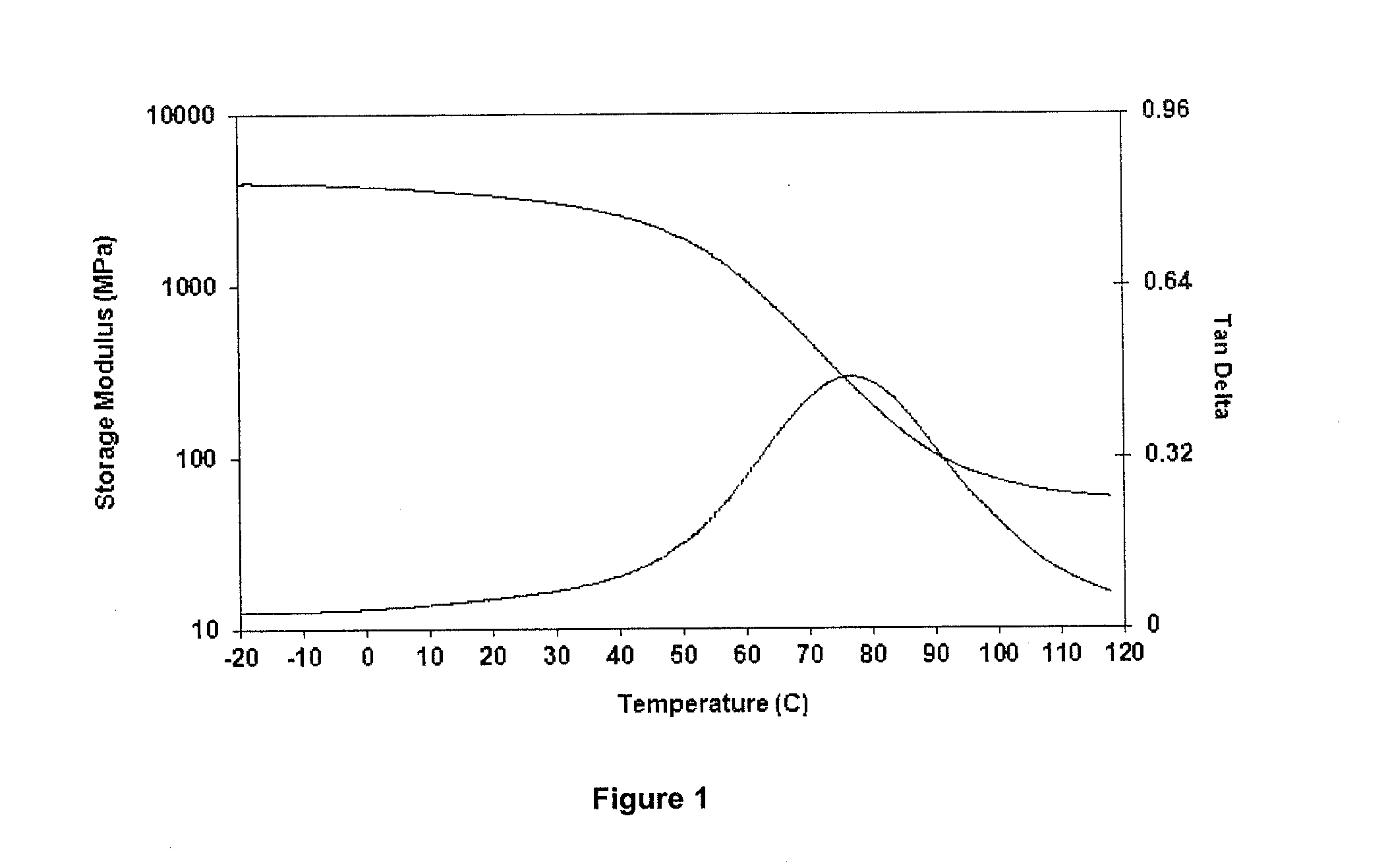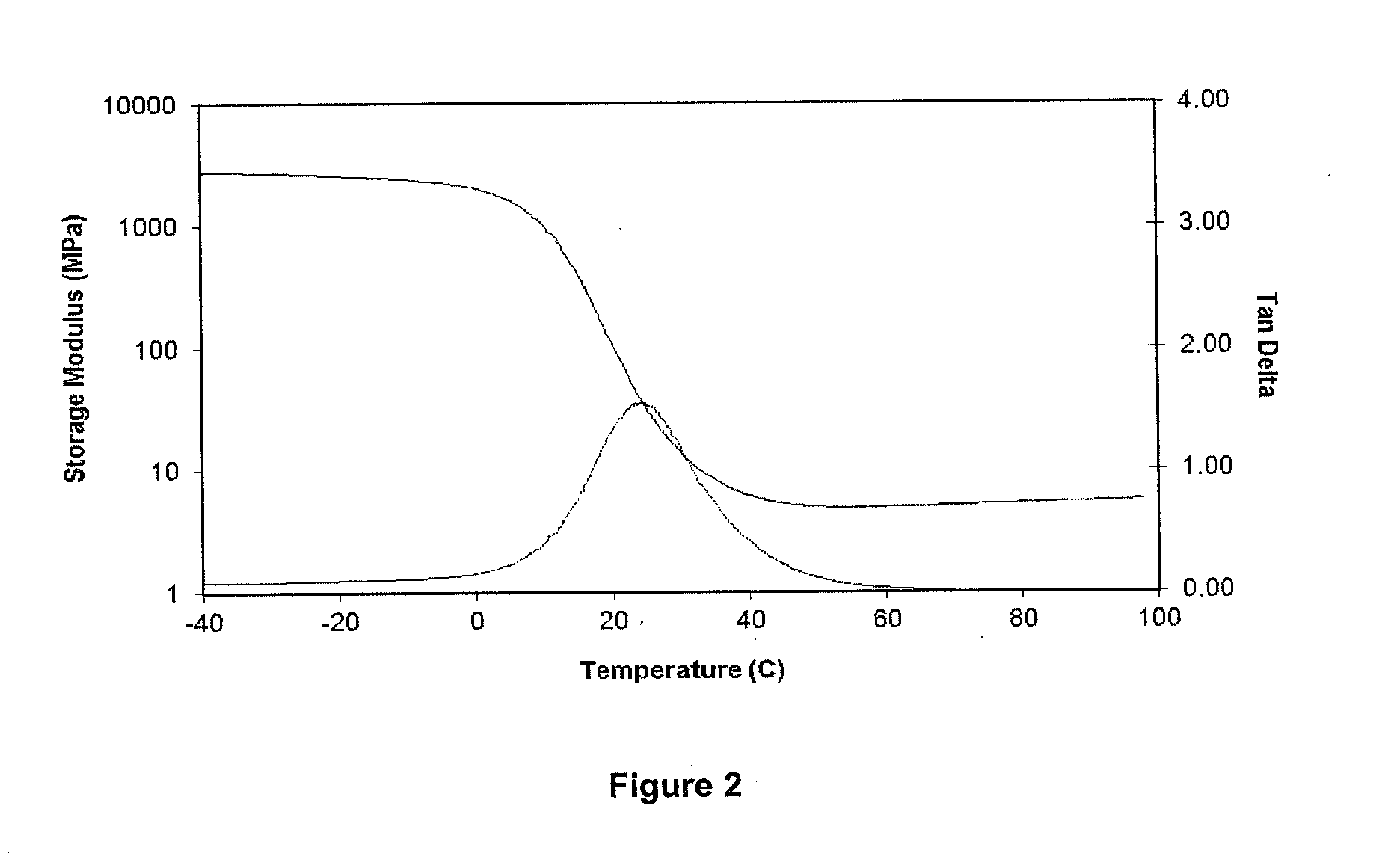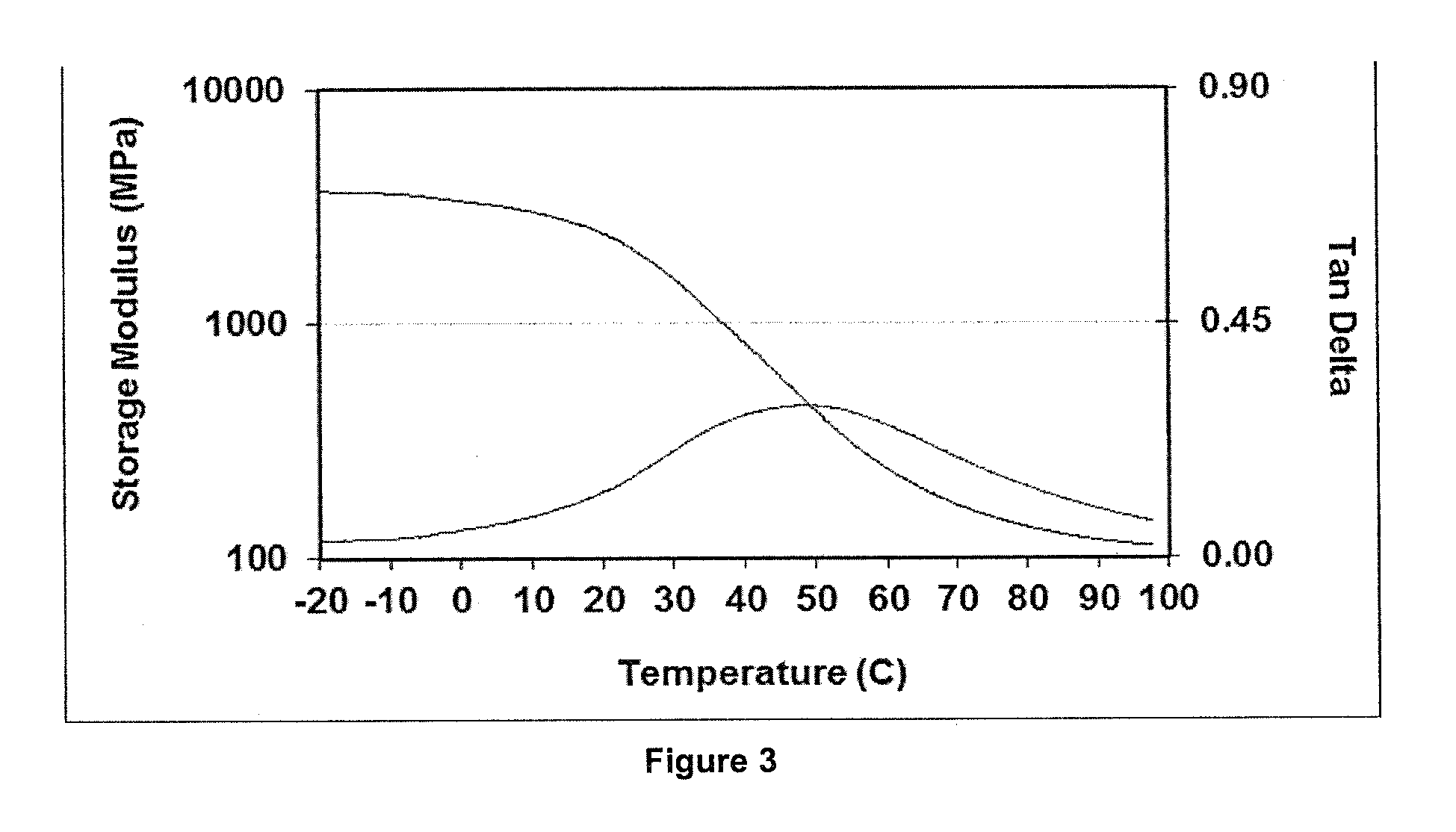Polymer compositions with enhanced radiopacity
a technology of radiopacity and polymer composition, which is applied in the direction of pharmaceutical delivery mechanism, surgery, catheter, etc., can solve the problems of intentionally short life expectancy and detrimentally affect the material properties of the base polymer, and achieve the effect of rapid response and fast enough shape recovery
- Summary
- Abstract
- Description
- Claims
- Application Information
AI Technical Summary
Benefits of technology
Problems solved by technology
Method used
Image
Examples
example 1
Polymer Formation
[0170]Methods for making polymer compositions are known in the art, including as described in WO2012 / 019145, incorporated by reference.
example 2
Formation of Clustered Crosslinkers
[0171]Shown below is an exemplary synthesis of a clustered pentaerythritol triacrylate (Sartomer SR444, Sartomer USA) with spacer:
[0172]FIG. 1 shows Dynamic Mechanical Analysis (DMA) properties of a material comprised of 67% of the iodinated monomer represented by Formula 1 in which R11 is an ethyl (C2) spacer group, L11 is an ester connecting group, and Ar11 is a 2,3,5-triiodobenzoate group, and 33% of the clustered C-10 diester-based crosslinker described in this example. This material has a broad Tg transition centered at 77° C. and a rubbery modulus at 107° C. of 63.5 MPa. The DMA results shown in FIG. 1 reveal the desirability of reducing the Tg contribution of the iodinated monomer in order to compensate for the higher crosslink density resulting in the apparent high Tg contribution of the clustered crosslinker.
[0173]FIG. 2 shows DMA properties of the material comprised of 70% of the iodinated monomer represented by Formula 1 in which R11 is ...
example 3
Formation of Iodinated Monomers with Spacers
[0175]The synthesis of structures such as the first monomer having different chain length between the polymerizable group and iodinated ring can be performed as described herein and known in the art. As a specific example, the structure
can be synthesized by the following exemplary procedure.
[0176]Set-up a 500 mL multi-neck flask in a water bath with mechanical agitator, thermocouple, nitrogen purge, and condenser vented to the basic solution scrubber. Charge 70 g 2,3,5-triiodobenzoic acid (TIBA) to the flask. Then charge 30 g thionyl chloride and Charge 300 g dichloromethane to the flask. Heat the pot to reflux at 40° C. with vigorous mixing. Hold for 20 hours at temperature. There should be very little solids remaining if TIBA is converted. Distill away most of the dichloromethane at atmospheric pressure, then add 100 g toluene to the flask and vacuum to distill away the remaining thionyl chloride, allowing flask temperature to reach 55-6...
PUM
| Property | Measurement | Unit |
|---|---|---|
| concentration | aaaaa | aaaaa |
| wt % | aaaaa | aaaaa |
| wt % | aaaaa | aaaaa |
Abstract
Description
Claims
Application Information
 Login to View More
Login to View More - R&D
- Intellectual Property
- Life Sciences
- Materials
- Tech Scout
- Unparalleled Data Quality
- Higher Quality Content
- 60% Fewer Hallucinations
Browse by: Latest US Patents, China's latest patents, Technical Efficacy Thesaurus, Application Domain, Technology Topic, Popular Technical Reports.
© 2025 PatSnap. All rights reserved.Legal|Privacy policy|Modern Slavery Act Transparency Statement|Sitemap|About US| Contact US: help@patsnap.com



